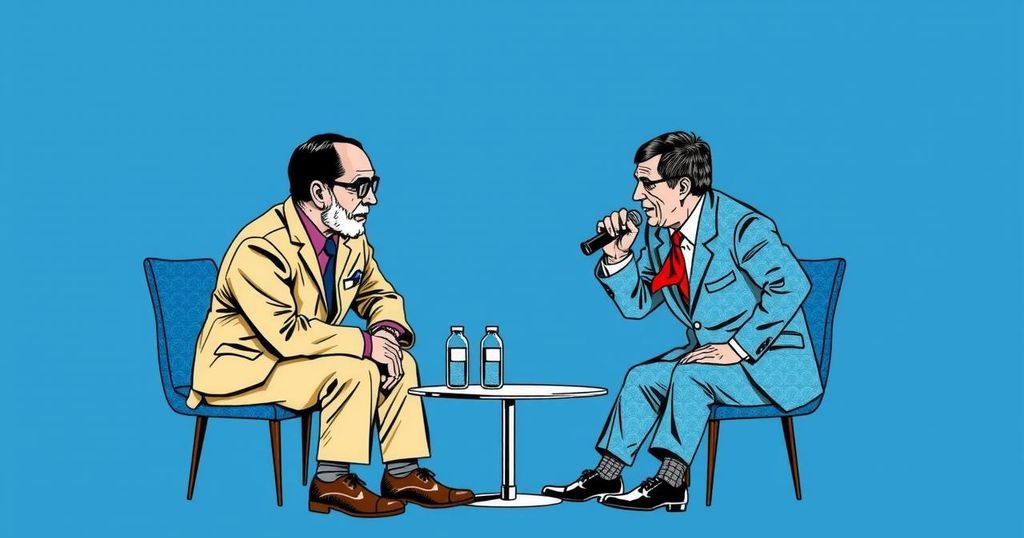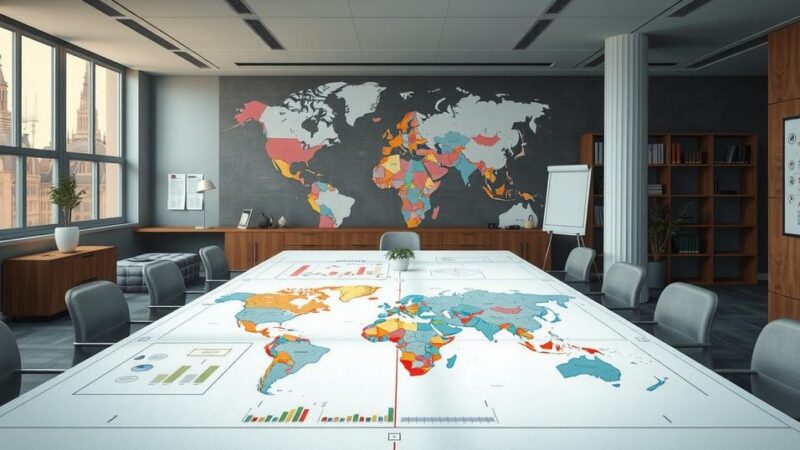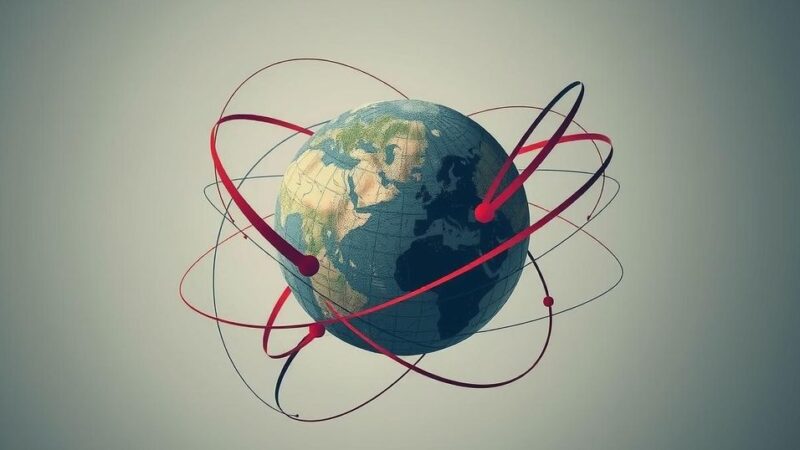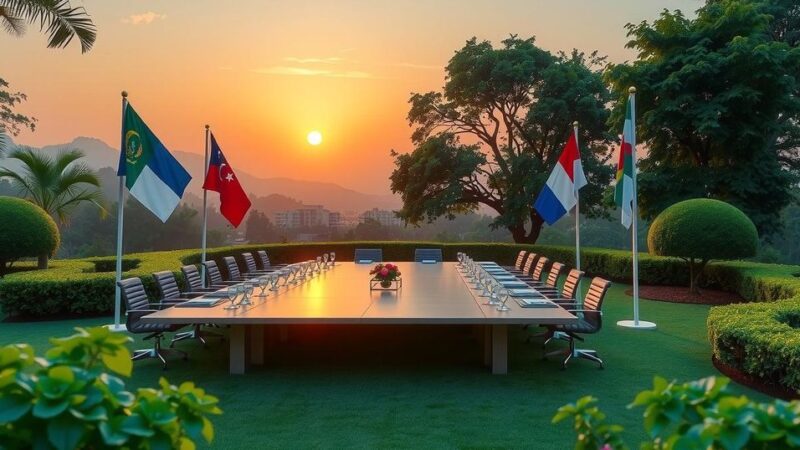As of late 2023, the UN Security Council has initiated the withdrawal of MONUSCO from the DRC amid ongoing violence, particularly from M23 and ADF. Kambale discusses the mixed reactions to MONUSCO’s departure, the struggles of the DRC’s armed forces, and the varied reception of regional forces such as EACRF and SAMIDRC. Diplomatic efforts involving Angola continue, but the prospects for lasting stability remain uncertain due to systemic corruption and external threats.
At the conclusion of 2023, the United Nations Security Council responded to a request from the Congolese government to withdraw the United Nations peacekeeping mission in the Democratic Republic of the Congo (MONUSCO) by the end of 2024. However, as the year draws to a close, MONUSCO has only completed its withdrawal from one of the three provinces in eastern DRC, and there presently exists no definitive timeline for the completion of the remaining withdrawals. MONUSCO troops are currently operating alongside forces from the Southern African Development Community (SADC), Congolese armed forces, and local militia groups, creating a complicated security landscape in the region.
Pascal Kambale, a respected Congolese researcher and human rights attorney based in Goma, provided an analysis of the prevailing security situation in eastern DRC, where violence remains sporadic yet severe. The northern section of North Kivu has suffered ongoing turmoil for decades, primarily attributed to the activities of the Allied Democratic Forces (ADF). Fortunately, recent joint operations involving the Uganda Peoples’ Defence Forces and the Armed Forces of the DRC (FARDC) have managed to contain the ADF.
Concerning the more alarming situation, Kambale highlighted the resurgence of the March 23 Movement (M23) in Ituri and southern North Kivu since 2022, which has led to the displacement of over two million individuals in the first half of the year alone. Notably, M23 has targeted internally displaced person (IDP) camps, raising grave concerns about ethnic cleansing in regions such as Rutshuru and Masisi, as alleged by the Congolese government.
Additional complications arise from various Mai-Mai militias, now operating under the new label of Wazalendo, who are purportedly meant to support the FARDC yet are suspected of collaborating with opposing forces, further muddling the security environment.
International and regional efforts to restore peace and security have historically been attempted. MONUSCO, deployed since 1999, has begun its exit process, but the government and MONUSCO acknowledged that the timeline for exiting North Kivu and Ituri is still indefinite, principally due to the ongoing volatility in those areas. As noted by Kambale, while the government and MONUSCO agree on the necessity of a wind-down of the mission, practicalities indicate this transition requires more time.
Communities in South Kivu have exhibited mixed reactions to MONUSCO’s withdrawal; while some feel relieved at the exit of an entity perceived to have overstayed its welcome, others express concern regarding the cessation of essential services previously administered by MONUSCO. Particularly distressed were the Banyamulenge minority leaders, who appealed for MONUSCO’s continued presence in their area prior to the mission’s official exit—unanswered pleas that underscore the local complexities of security and governance.
The challenges have been compounded by the introduction of regional intervention forces in conjunction with MONUSCO’s operations. Pascal Kambale highlighted the mixed reception of the East African Community Regional Force (EACRF), which deployed amid public skepticism given the historic aggressions of member states like Rwanda and Uganda. The EACRF’s perceived lapses in diplomacy and engagement further alienated the local populace, casting doubt upon the efficacy of their mandate.
Conversely, the Southern African Development Community (SADC) has drawn a more favorable reception, partly due to historical precedents established by their involvement with MONUSCO’s Force Intervention Brigade. Although SADC forces face the same challenges as EACRF, their previous engagements have cultivated goodwill, yet they must now demonstrate effectiveness in operations against entities such as M23 to maintain credibility.
In light of these multifaceted dynamics, ongoing peace talks facilitated by Angola have emerged in hopes of addressing the conflict with M23. Although recent cease-fire violations have strained negotiations, a reinforced monitoring group has been deployed in collaboration with DRC and Rwanda, igniting cautious optimism in Goma regarding the potential for a substantive peace agreement.
Despite advancements in the training and morale of the FARDC since their struggles against M23, significant concerns regarding corruption and organizational disarray persist. However, recent efforts to confront these issues signal recognition within both the government and FARDC alike that lasting issues demand substantial reforms to foster long-term stability without reliance on external military support.
The Democratic Republic of the Congo (DRC) has been host to a complex array of international peacekeeping and regional intervention forces due to ongoing violence and instability, particularly in eastern regions like North Kivu and Ituri. MONUSCO, a longstanding UN peacekeeping operation, has faced increased scrutiny and calls for withdrawal from the Congolese government amid internal security challenges. The ambivalence toward MONUSCO’s effectiveness has led to the enlistment of regional forces, such as the EAC and SADC, whose operations and public perception differ significantly. These dynamics unfold amid a persistent insurgency from groups like M23 and external factors involving neighboring countries such as Rwanda, further complicating the peace process.
In conclusion, the security landscape in eastern DRC remains precarious, with the withdrawal of MONUSCO and the concurrent involvement of regional forces like EACRF and SAMIDRC eliciting varied reactions from local communities. While there are signs of potential diplomatic solutions and improvements within the FARDC, significant challenges—including corruption, weak institutionalisms, and external aggressions—continue to undermine stability. Ultimately, the DRC faces the exigent task of transitioning towards self-sufficiency in security while navigating the intricate relations between domestic actors and foreign interventions.
Original Source: theglobalobservatory.org






